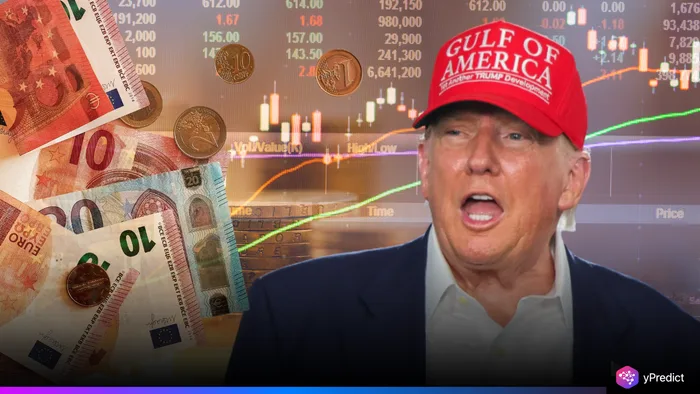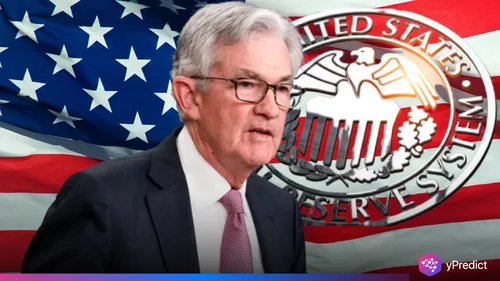
The euro dropped to a three-week low on Monday after U.S. President Donald Trump threatened a steep 30% tariff on imports from the European Union and Mexico. The proposed tariffs are scheduled to take effect from August 1, targeting two of America’s largest trading partners. The announcement came through letters posted on Trump’s Truth Social account, intensifying already fragile global trade relations.
The announcement rocked forex markets immediately, sending the euro and the Mexican peso lower versus the U.S. dollar. Overall market reaction was pretty subdued when the Asian hours were taken into account though traders are waiting for higher volatility ahead of important U.S. and Chinese economic reports. In the meantime, Trump’s tariff threat comes with renewed scrutiny of Federal Reserve Chair Jerome Powell, where Trump is now calling for Powell to resign.
Euro and Peso Fall After Trump’s 30% Tariff Move
The threat of Trump tariffs have subsequently reduced the euro to $1.1679 or down 0.12%, its lowest since three weeks prior. In addition, the Mexican peso was weaker, as the dollar was higher 0.25% at 18.6699 pesos. However, steep moves are a reflection of investor fears that trade conditions worsen and that U.S. allies are under economic duress.
The European Union called the new tariffs, “unfair and disruptive” and extended the suspension of countermoves until early August. EU officials stated that they would move forward in seeking a negotiated resolution. Mexico was similarly disappointed to have lost to what they described as progress on the diplomatic trade front.
While there was diplomatic outrage, financial markets seemed to take the latest threat in stride. Analysts have suggested that repeated Trump tariff announcements have diminished their efficacy to traders, at least temporarily.
Currency Markets Show Limited Reaction Outside Euro and Peso
With the euro dips and the Mexican peso decline, the broader currency market seemed relatively stable, with only small shifts. The British pound eased by 0.07% to $1.3481, and the Japanese yen gained 0.1% to 147.28 per dollar.
The Australian dollar fell by 0.14% to trade at $0.6565, and the New Zealand dollar fell slightly further, by 0.4% to $0.5984. The analysts at Commonwealth Bank of Australia said that the weaker currency market reaction would suggest that investors see Trump’s latest move as a negotiating tactic rather than an immediate policy change.
Markets Shrug Off Trump’s Powell Criticism
Trump stirred confusion over the weekend by claiming it would be “great” if Fed Chair Jerome Powell stepped down. His remark reignited concerns about political interference in the Federal Reserve, especially since Trump often pushed for lower interest rates. He has consistently challenged the Fed’s cautious approach to rate adjustments.
Despite the noise, financial markets chose to ignore Trump’s comments. Investors stayed focused on upcoming economic indicators rather than political drama. U.S. equities dipped slightly for the week but still hovered near record highs, showing resilience amid political uncertainty.
Eyes on U.S. Inflation and China GDP Data
As the Trump tariff threat faded from news cycle, traders are turning their attention to upcoming economic reports. On Tuesday, the U.S. inflation report for June is likely to give the market clues to the Federal Reserve’s next step, with markets presently expecting above 50 basis points of cuts by December.
On the other hand, China reported growth in both exports and imports for June. Analysts think this could be seen as Chinese exporters rushing goods out ahead of new tariffs. Nevertheless, the Chinese yuan saw little change, with the onshore yuan at 7.1704 and slightly stronger in the offshore market at 7.1713.
Investors are now waiting for China’s second-quarter GDP report which is due Tuesday, as it may provide further direction on global demand and economic momentum.







